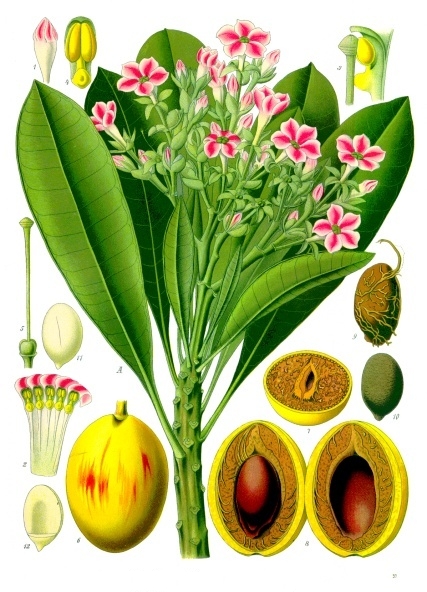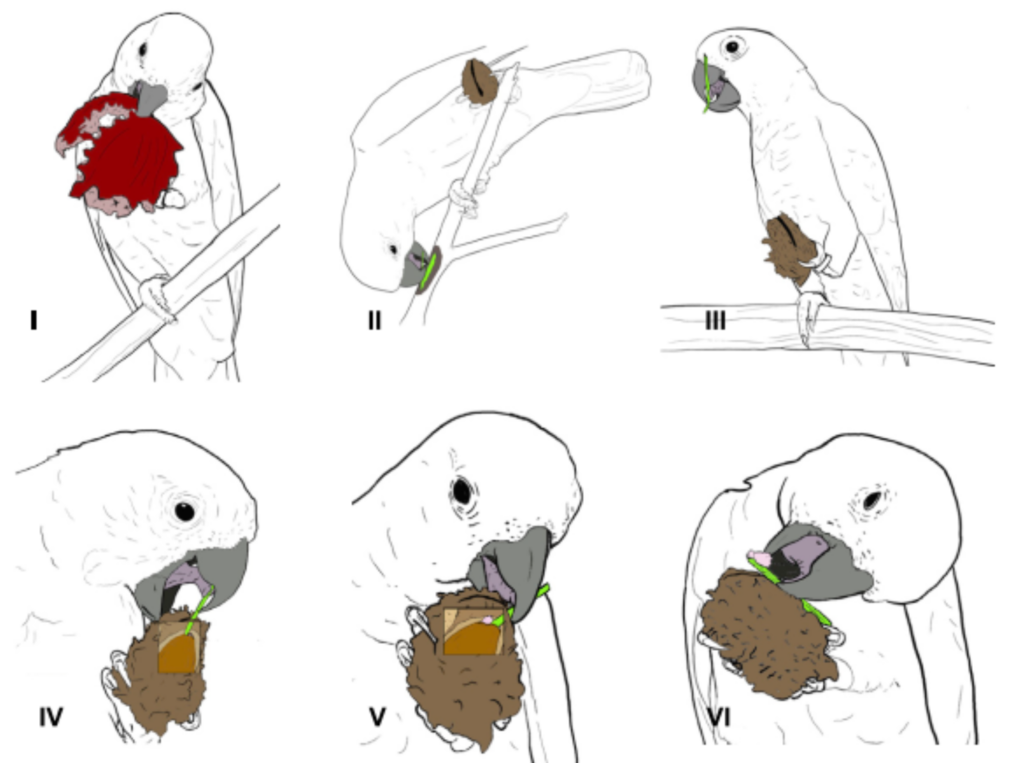Goffin’s cockatoo
Can you imagine a day without a phone, a coffee mug or a toothbrush? Humans are truly a tool-using species.
For a long time, we wanted to believe that we were special in this respect. But then came reports on chimps using carefully selected stones for nutcracking, crows using sticks to extract insects from holes in wood and many more examples of animals using tools, both in nature and in the lab.
And what about using tool sets – multiple tools with different functions used sequentially or simultaneously to achieve a single goal – for example, cutlery to eat a meal? While we are experts in this respect, chimpanzees also use different types of objects to extract bees and termites from their nests. For a while it seemed that only primates, we and our close relatives, use tools sets.
But recently, for the first time, scientists reported the manufacture and use of tool sets in animals that are much less closely related with us: birds – Goffin’s cockatoos.
These parrots only occur in the wild in the tropical forests on the Indonesian Tanimbar Islands, where they forage on various foods, including fruits and nuts. When some wild birds were taken to an outdoor research aviary and given sea mango fruit (wawai, see picture below) they immediately and spontaneously started making and using different tools to get to the nutritious seeds.

First the birds used their beaks to remove the fleshy part of the fruit. Then they used several wooden tools to extract the seed from the hard pit. They wedged tools in the pit crack, or used them to pierce the coating of the seed and most importantly pushed them into the pit crack and moved them in such a way that parts of the seed were pushed out of its shell (see the picture and video below). Tool manufacture and different actions were repeated a couple of times per fruit.

Importantly, the birds made three distinct categories of tools.
Sturdy tools – thick and blunt – were produced by breaking off a branch and modifying the remaining stump with the beak. One of the birds used such tools to wedge into the pit crack (to widen it), leaving it there while other tools were used.
Fine tools – thin and sharp, and the most time-consuming to make – were manufactured by splitting a slim fragment from a branch and shaping it further with the beak and tongue. Birds used them mainly to pierce the seed coating, but also for seed extraction.
Medium tools – in between the two extremes in thickness and sharpness – were produced similarly to thin tools. The birds used them sometimes for wedging but they were most effective for seed extraction.
The birds adjusted the order in which they used tools depending on the depth and extraction difficulty of a given seed.
Out of the 15 captured birds only two made and used tool sets, showing that this behaviour is not widespread in the whole population. Yet, it was not learned in captivity, but in the wild, since the two tool-using cockatoos did so immediately (or almost immediately) after being given the fruit, without any opportunity to learn. Tool use most likely emerged innovatively in some individuals and was applied flexibly, showing how creative and intelligent these cockatoos are.
Cockatoos, welcome to the club of cutlery-using species!
I wonder who will be next to join us in this (for now) exclusive club.
Click here for more information and videos.
Polską wersję tego wpisu możesz znaleźć tutaj.
Griffin’s cockatoo photo: Lip Kee Yap – originally posted to Flickr as Tanimbar Cockatoo (Cacatua goffiniana), CC BY-SA 2.0, https://commons.wikimedia.org/w/index.php?curid=5095972
Sea mango drawing: Franz Eugen Köhler, Köhler's Medizinal-Pflanzen – List of Koehler Images, Public Domain, https://commons.wikimedia.org/w/index.php?curid=255516
Tool use drawing from the original article: O’Hara et al. (2021) Wild Goffin’s cockatoos flexibly manufacture and use tool sets.


Wonderful article…thank you!
Thank you 🙂